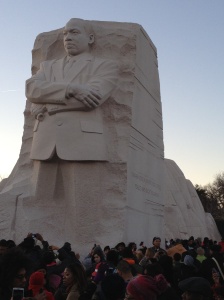 Death threats, firebombing, incarceration and assassination of Southern Blacks seeking freedom and equality continued from the time of enslavement until long after most people believe The Civil Rights Movement ended. Alabama is steeped in the blood of martyrs who have never made the history books, but they were heroes to us. The fact that death was a potential price to be paid by Freedom Fighters was always on our minds.
Death threats, firebombing, incarceration and assassination of Southern Blacks seeking freedom and equality continued from the time of enslavement until long after most people believe The Civil Rights Movement ended. Alabama is steeped in the blood of martyrs who have never made the history books, but they were heroes to us. The fact that death was a potential price to be paid by Freedom Fighters was always on our minds.
Mr. David Colston, age 32, was a local resident who had participated in Wilcox County voting rights protests. He and his family were pulling into the parking area outside Antioch Baptist Church to attend a civil rights mass meeting. A white farmer, Jim Reeves, deliberately bumped Colston’s car. When Colston got out to protest, Reeves shot Mr. Colston in the head at close range in front of the Colston family and dozens of community members coming out of the church.
SCLC leader, Daniel Harrell and local leader Rev. Frank Smith were leaders of the meeting in the church. After the police took Reeves into “protective custody.” Harrell and Smith reconvened the mass meeting with a eulogy for Mr. Colston and called for a march the next day. Camden native , King scholar and author, Lewis V. Baldwin, who was still in high school at the time, recalled the march of hundreds of Wilcox County Black residents, as being very solemn, almost silent.
The next day, SCLC Photographer Bob Fitch arrived with Martin Luther King Jr., to take the photos that appeared in Jet Magazine. Fitch told me that the family was devastated but grateful for King’s consoling visit.
Nearly 50 years later, Colston’s namesake nephew, David Colston, was elected as the first Black representative from Wilcox County to serve in the Alabama State Legislature. Of all the civil rights murders in the South in the 1960’s, the Colston assassination is recalled most vividly by the then youn Wilcox County Freedom Fighters. Typical of the times, despite witnesses, the murderer was acquitted. May the Colston family, their relatives and neighbors draw some comfort from knowing that David Colston’s sacrifice is mourned by many of us who continue to fight for racial justice.
Update August 2013: Despite a conservative backlash that consistently drives out the majority of promising young Democrats, David Colston has fulfilled the dream first, of being an Alabama state trooper who truly understands justice and now, of continuing to serve in the statehouse in Montgomery. He will run for a second term in 2014. With the outcry and awareness generated by the recent Supreme Court decision on the 1965 Voting Rights Act http: and the tragic Trayvon Martin case, perhaps good-hearted, strong and smart Alabamans of all races will vote for progress during the 3013 November’s mid-term elections. The future is in your hands: move forward or continue a slide backwards.









